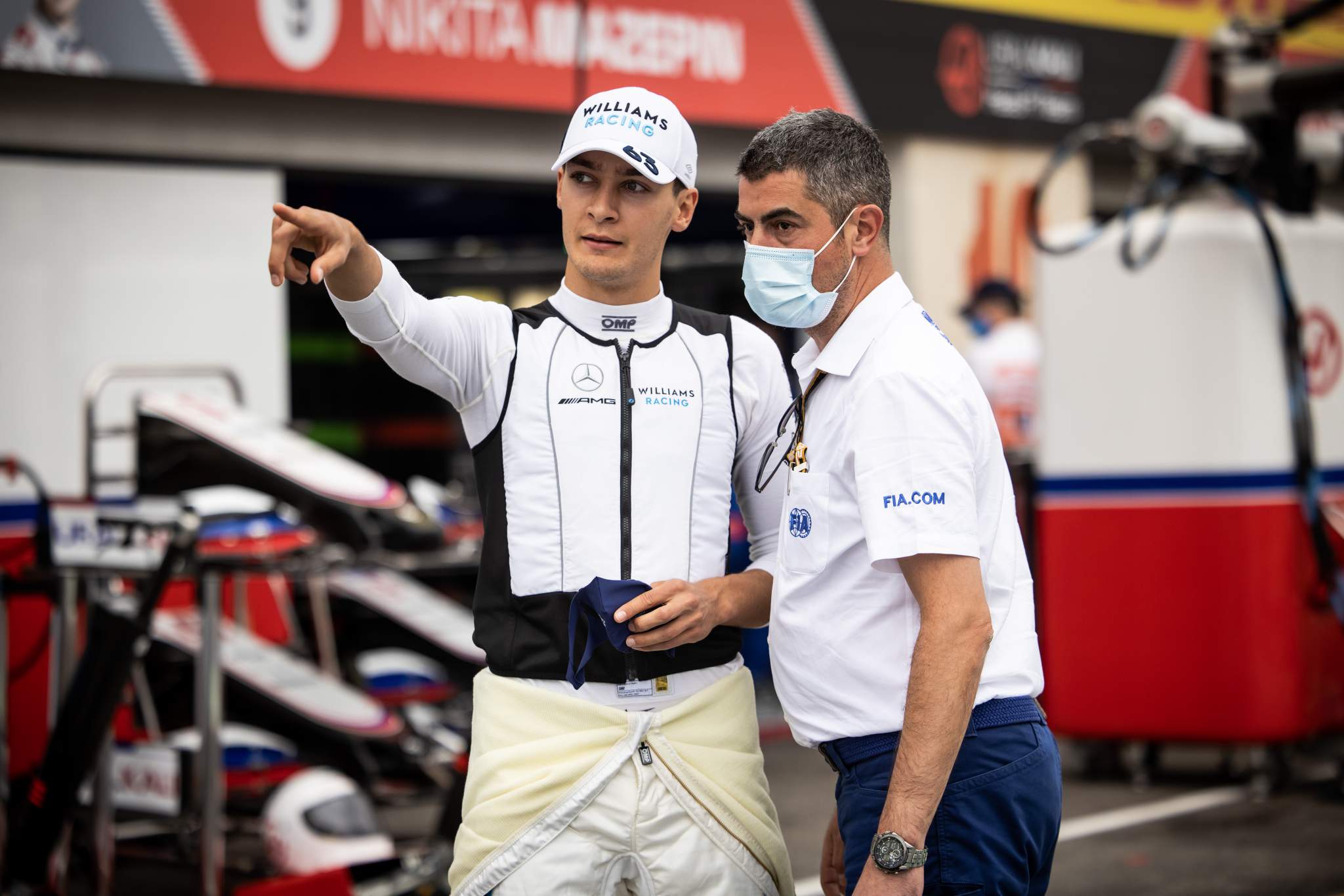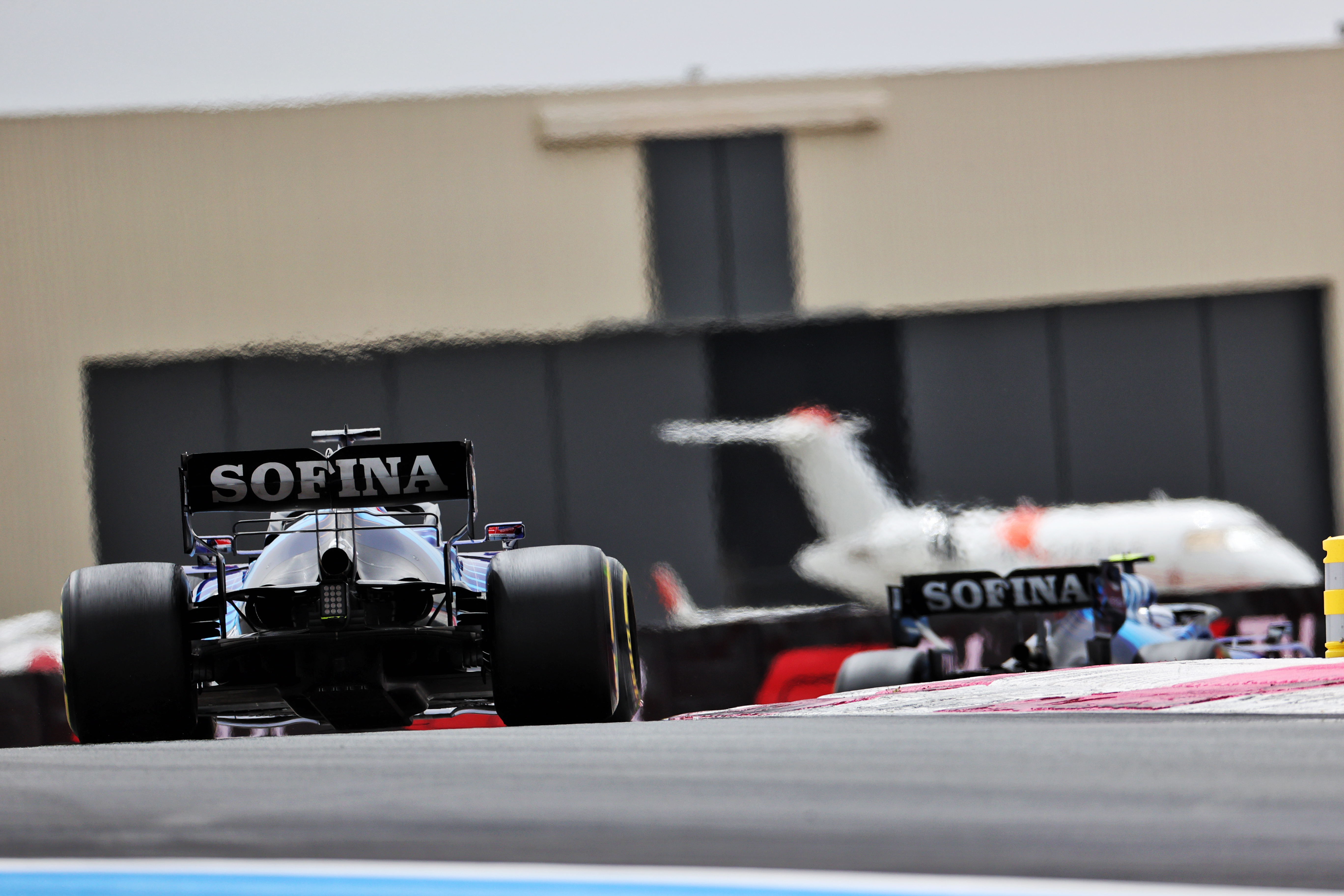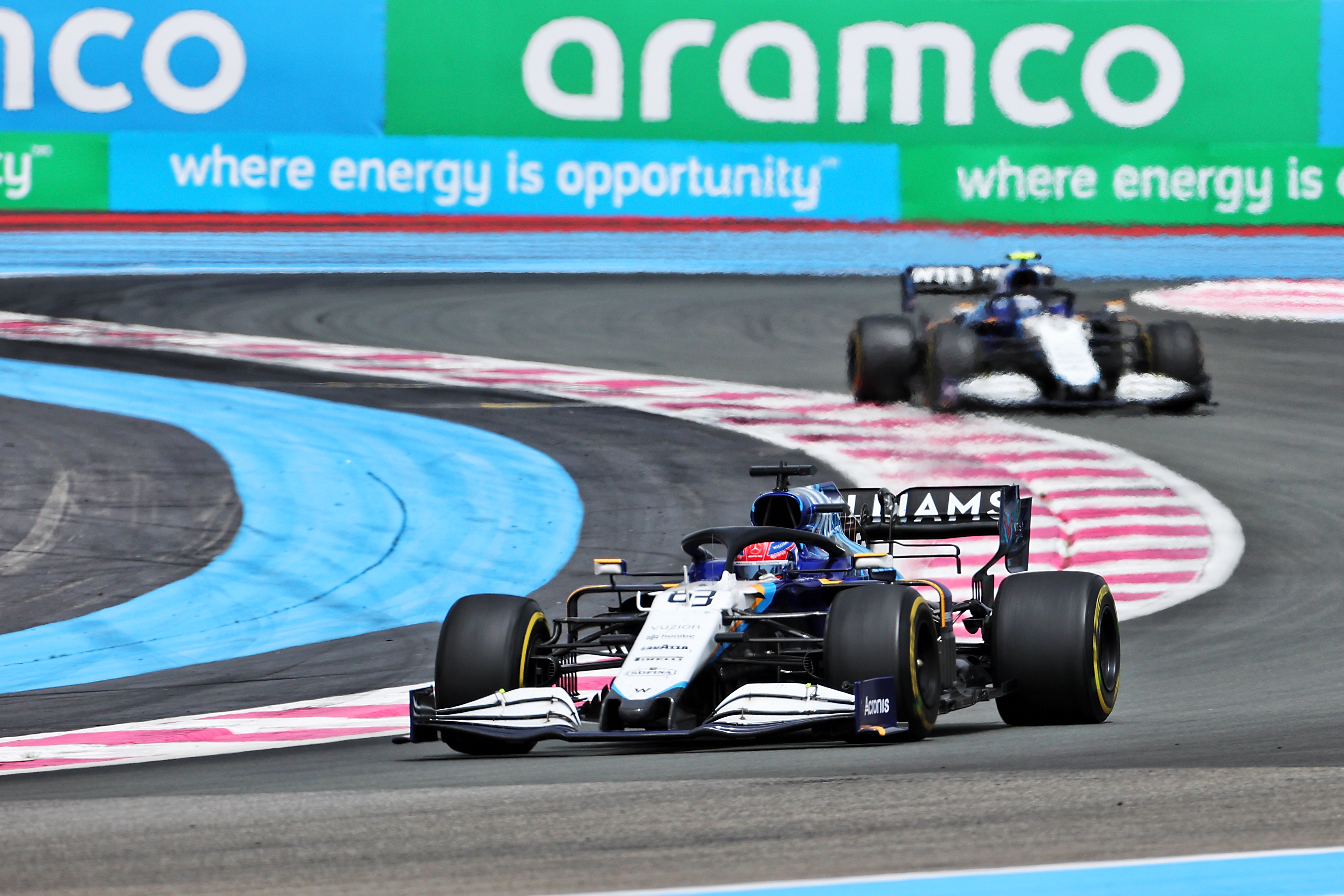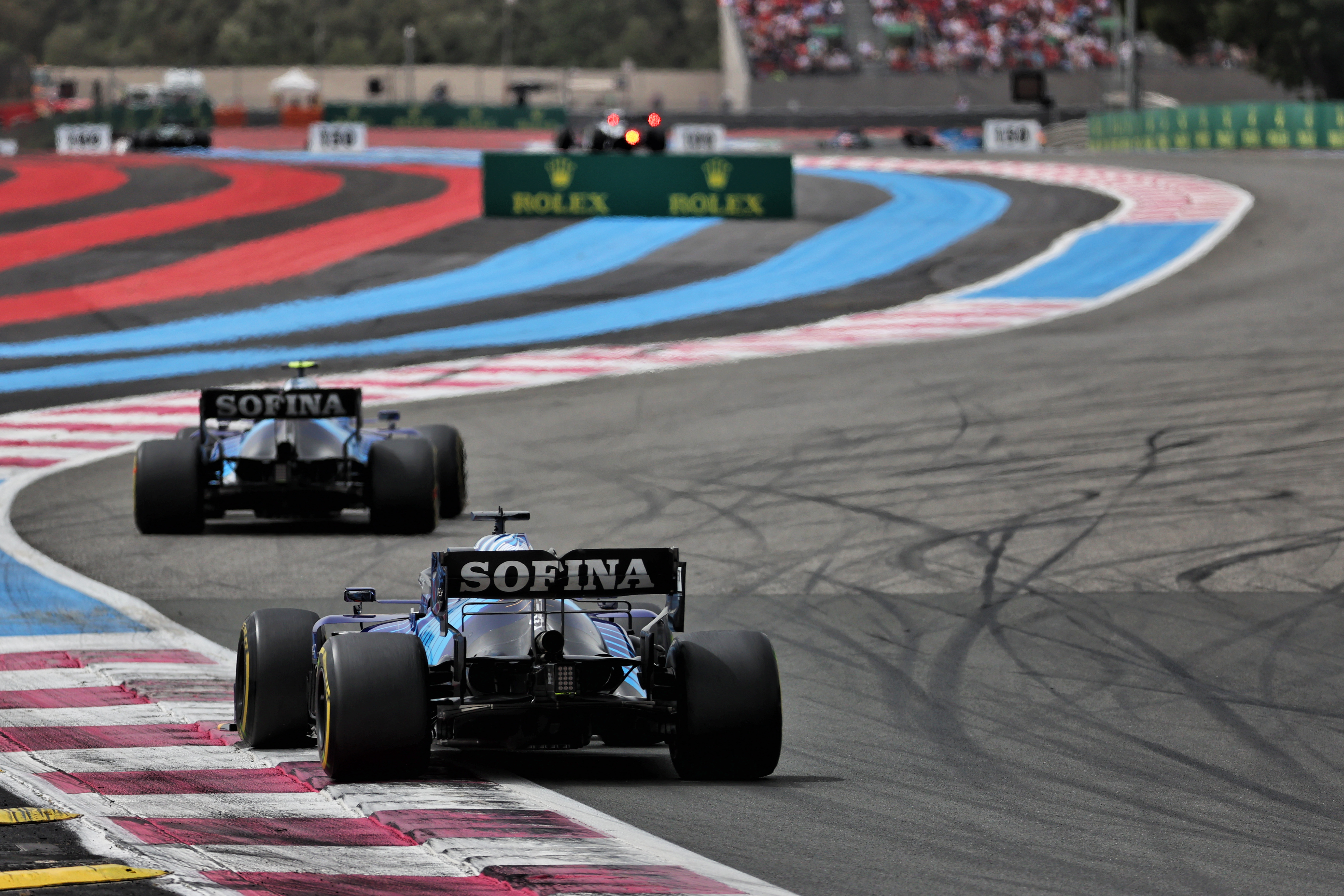Up Next

George Russell was justifiably delighted after finishing 12th for Williams in the French Grand Prix, the team’s best result of the Formula 1 season. But by his own admission, a weakness he has been battling throughout his grand prix career initially held him back.
Russell started 14th, having maintained his 100% record of reaching Q2 in 2021, but finished the first lap in 17th, having lost places to team-mate Nicholas Latifi, Kimi Raikkonen and Lance Stroll on the opening lap.
But after what he described over the radio at the end of the race as a “terrible start”, he drove an excellent race. He passed Latifi on the approach to the chicane on lap 13, then pitted to switch from medium to hard Pirellis four laps later.
That undercut allowed him to jump the Alfa Romeo drivers and Alpine’s Esteban Ocon, before he passed AlphaTauri driver and pitlane starter Yuki Tsunoda for 12th with two and a half laps remaining.
“I’d go as far as saying it’s probably the best race we’ve ever had together with Williams,” said Russell.

“It was a shame about the opening laps. I made a really bad start, really struggled but I don’t think it changed a huge amount at the end, P12 was our absolute maximum.
“It was just a shame nothing really happened in front [in terms of retirements] because P12 for us on merit is very strong.”
Russell was quick to highlight his first-lap struggles after the race. While his initial launch wasn’t too bad, he then picked up wheelspin that made him vulnerable on the run to the first corner.
With Latifi behind gaining ground on the outside and Mick Schumacher on the inside, Russell drifted left into the middle of the track and was squeezed between the pair in the first corner, leading to a brief lockup.
That allowed Raikkonen to start to draw alongside on the run to Turn 3, and after Russell checked up, having had a glance to the right of Latifi, Raikkonen drew ahead. Schumacher went off at Turn 3, which at least gave Russell that position back.
Russell then ran wide at the penultimate corner at the end of the lap, allowing Aston Martin driver Lance Stroll past.

“I don’t think I did a good enough job to get the tyres in the window on the formation lap and I just had a load of wheelspin off the line, then it was just a knock-on effect,” said Russell.
“I got sandwiched into Turn 1. I had a car on the outside, a car on the inside – nowhere I could go.
“It’s something I’ve really struggled on since I’ve been in F1, to be honest, since I’ve been at the back of the grid. It’s something I really, really need to work on, so I keep on trying.”
“But we managed to make it work in the end, pitting early and took those hard tyres a really long way.”
Russell’s first-lap weakness first became apparent in his debut F1 season with Williams in 2019. Despite always outqualifying team-mate Robert Kubica, he finished the first lap behind him on 11 occasions. He recognised the problem that season and attributed it partly to unfamiliarity with being at the back and the pronounced impact of the turbulence from a field of cars ahead.

Last year, Russell generally started higher up the grid than in his rookie season, given he made Q2 on nine occasions for Williams, and his net losses on the first lap were zero, which indicated an improvement despite some races where his decisions didn’t pay off on the first lap.
This year, as an ever-present in the top 15 on the grid who has twice started on the sixth row, he has lost places on four opening laps, held his position on two and gained only once – moving from 12th to 11th at Imola.
Given the strength of Russell’s weekend, it would be unfair to focus too much on the negative on the first lap, but with a Mercedes seat still there to be fought for, his performances are under intense scrutiny. It’s to Russell’s credit that he’s never been afraid to admit this is an area that needs to improve.
But the race drive after the opening lap serves only to enhance Russell’s reputation, with his tyre management in particular impressing. He was in regular dialogue with race engineer James Urwin and managed to control the risk of graining and keep the tyres in the temperature window during his hard stint.
This wasn’t easy to achieve, as team-mate Latifi discovered after spending a spell of his second stint struggling, having allowed the temperatures to drop.

“It was really tricky out there, it was cold, the tyres needed really managing,” said Russell. “It was that limit between keeping the temperature in but not graining them.
“If you pushed too hard, you had a chance of graining them, if you went too slow, they would drop out the window, so it was just balancing this throughout the whole race.”






